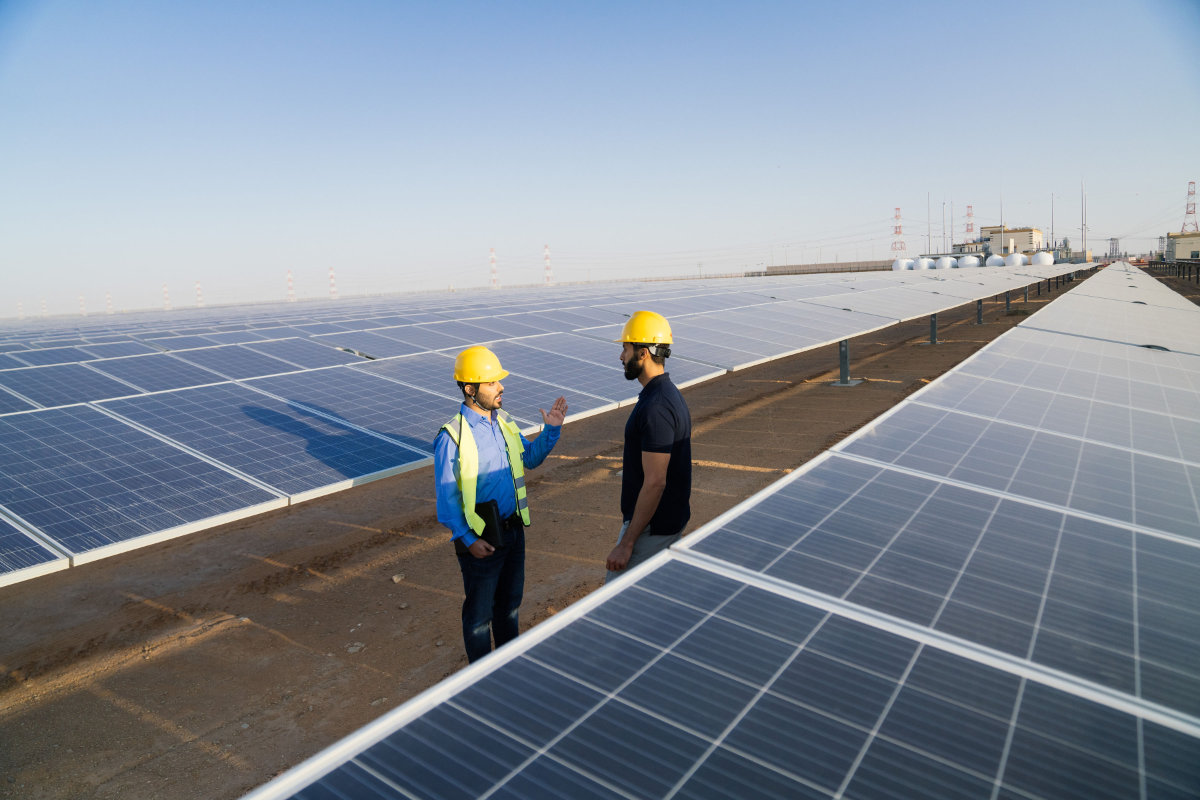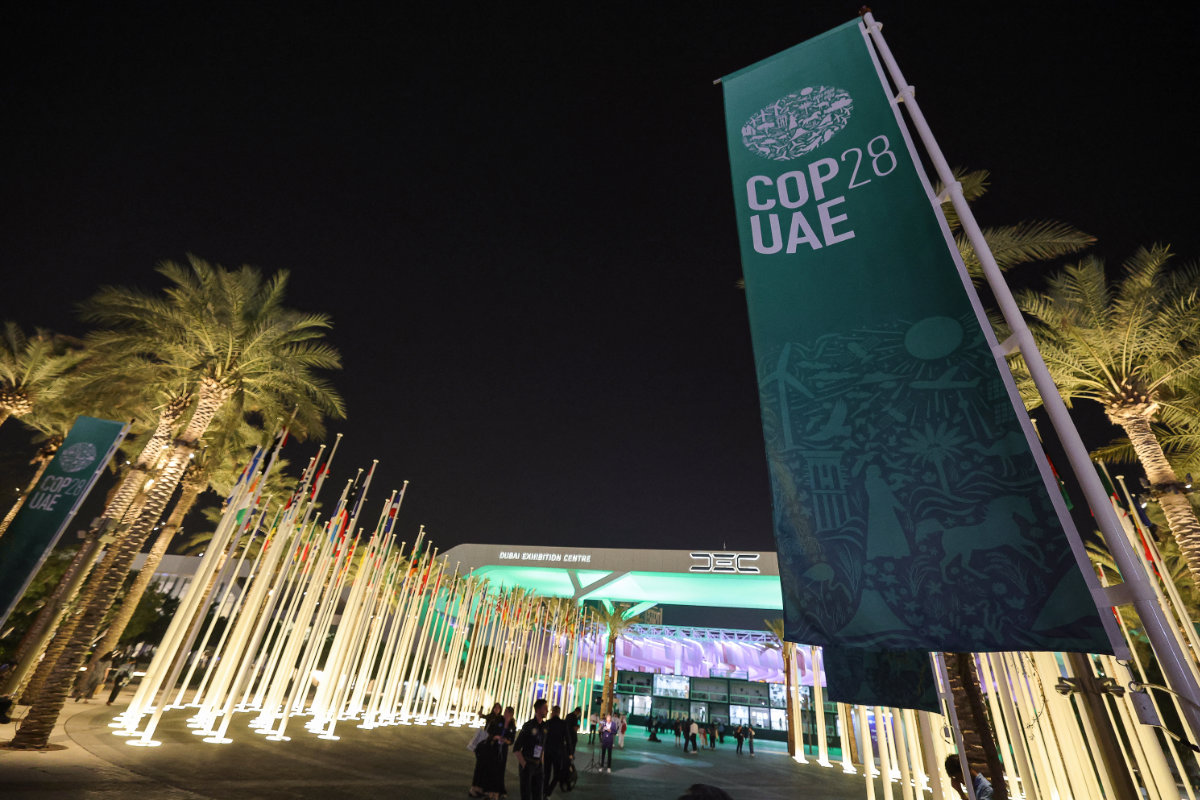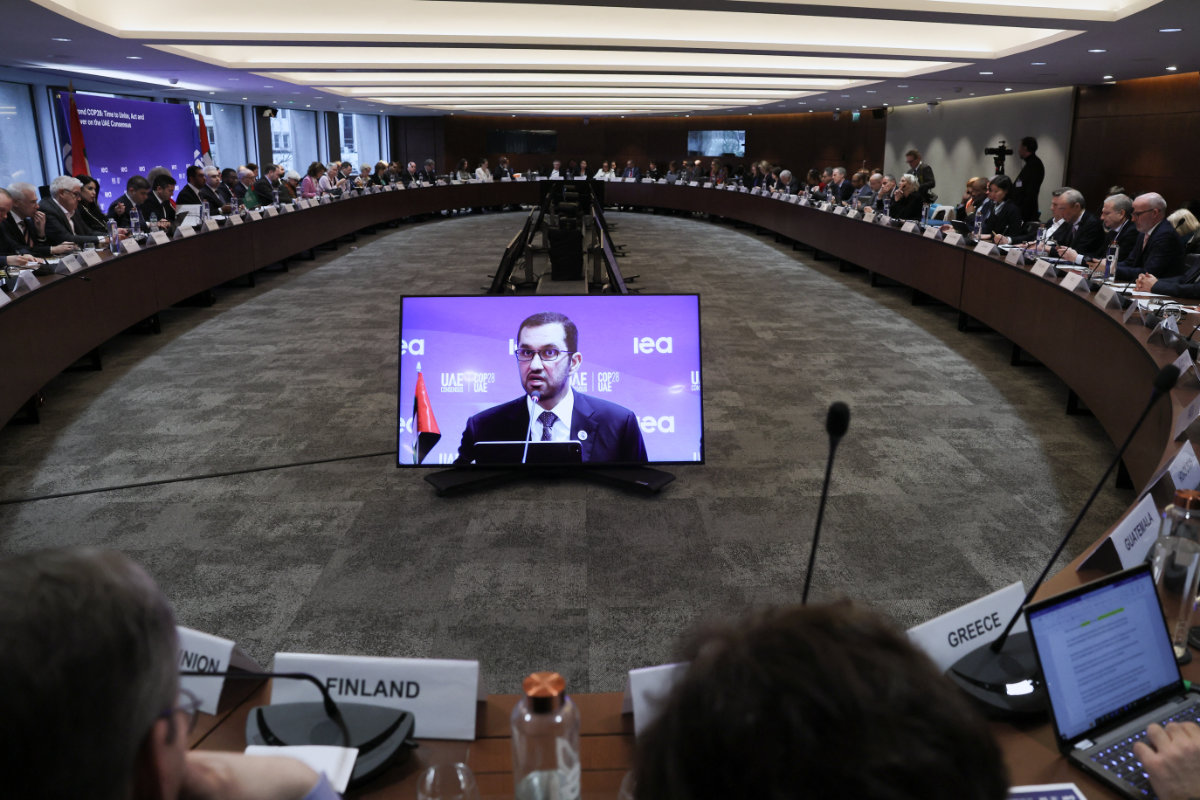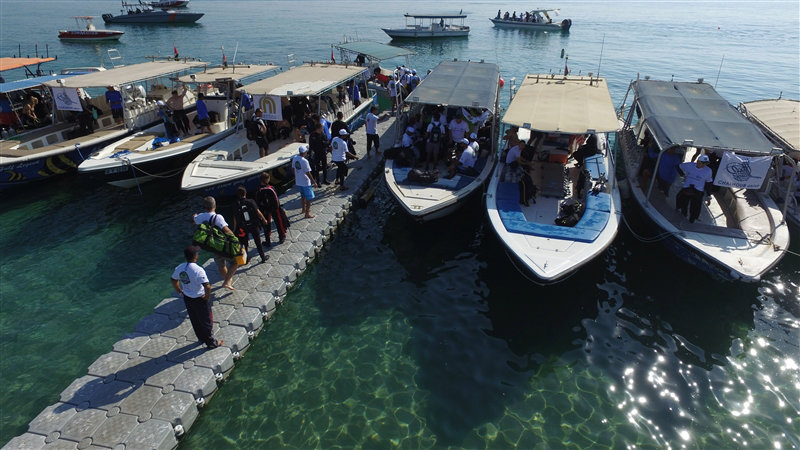RIYADH/DUBAI: The Middle East and North Africa region is at a crossroads. As temperatures rise, water scarcity intensifies and desertification spreads, the region’s immense economic potential is at risk unless bold action is taken.
Fortunately, Saudi Arabia, the UAE and Qatar have been taking steps to adopt sources of renewable energy, not only to meet their own commitments to slashing carbon emissions, but to take a lead in the global energy transition.

The Sakaka Solar Plant project in Saudi Arabia's northern province of Jouf, spread over an area of 6 square kilometers, generates 940,000MWh electricity and supplies enough clean energy to power 75,000 households. (SPA)
This adoption of renewables has come hand in hand with a broader regional push to diversify economies away from oil, invest in carbon capture, storage and utilization, and roll out policies designed to protect natural habitats and expand green spaces.
There is a lot at stake for the MENA region, which is viewed as being uniquely vulnerable to the effects of climate change. Indeed, several studies suggest parts of the region could be uninhabitable by 2050 owing to extreme temperatures and water scarcity.
In November and December last year, Dubai hosted the UN Climate Change Conference, COP28, at which states agreed to a historic set of measures to stop average global temperatures rising 1.5 degrees Celsius above pre-industrial levels.

People walk outside Expo City in Dubai on December 12, 2023 during the United Nations Climate Change Conference COP28. (AFP)
The agreement called for a “transitioning away from fossil fuels in energy systems, in a just, orderly and equitable manner ... so as to achieve net zero by 2050 in keeping with the science.”
It also called for the creation of a fund to help vulnerable countries pay for climate-related damage, and the publication of landmark assessments on the world’s progress in mitigating the effects of climate change.
Furthermore, it called for a tripling of renewable energy capacity worldwide by 2030, the speeding up of efforts to reduce coal use, and the adoption of technologies for carbon capture, storage and utilization.
Although not all nations were satisfied with the text of the deal, it did mark an important step forward, building on the ambitions laid out in the 2015 Paris Agreement.
Speaking at the Paris headquarters of the International Energy Agency on Feb. 20, COP28 President Sultan Al-Jaber said that meeting the goals agreed under the “UAE Consensus” would require “unprecedented action” by global stakeholders.
“Solidarity overcame polarization, inclusivity prevailed over finger-pointing and the spirit of partnership brought the best of humanity together,” he said of the COP28 summit.
“To keep this spirit alive and build on the momentum achieved at COP28, the UAE Consensus set a new direction and a clear course correction. We must now turn an unprecedented agreement into unprecedented action. Now is the time for all stakeholders to step up.”

COP28 president Sultan Ahmed Al-Jaber is seen on a screen as he speaks during a high-level round table on COP energy and climate commitments organized by the International Energy Agency at its headquarters in Paris on February 20, 2024. (AFP)
While many Western nations appear to be rolling back their climate commitments, the Middle East and North Africa region has risen to the challenge.
One bold example of this is the Saudi Green Initiative, launched by Crown Prince Mohammed bin Salman in 2021 to protect the Kingdom’s environment, conserve wildlife, and plant billions of trees, while enabling sustainable economic growth.
“Since its inception, SGI has implemented a range of initiatives to protect and conserve the Kingdom’s vital ecosystems,” Osama Ibrahim Faqeeha, deputy minister of environment, water and agriculture, told Arab News.

Osama Ibrahim Faqeeha
“For example, the National Greening Program, which is driving nationwide tree-planting efforts across Saudi Arabia and is underpinned by two key guiding principles: firstly, maintaining ecosystem balance, and secondly, utilizing renewable water resources.
“The program follows a nature-based regeneration approach to allow its ecosystems to flourish over time.”
Faqeeha said several dedicated initiatives under the SGI are being actioned to protect biodiversity hotspots through the designation of protected areas.
“SGI also aims to promote sustainability by raising awareness and reducing the adverse impact of economic sectors on the ecosystems, driving all these efforts by engaging all relevant stakeholders from the public, private, and third sectors,” he said.

Saudi Arabia's National Greening Program has been in full swing since 2021. (SPA)
Other significant steps the Kingdom has taken to safeguard biodiversity include the establishment of a dedicated national environmental framework, underpinned by the National Environment Law.
Several agencies have been established to carry out this work, including the National Center for Wildlife, National Center for Vegetation Cover, National Center for Environmental Compliance, and the National Center for Waste Management.
Under his ministry’s oversight, Faqeeha said these agencies “regulate and monitor critical environmental domains linked to biodiversity conservation, such as terrestrial, marine, and coastal ecosystems, land and vegetation cover, environmental media, waste management, (and) underscore the commitment to biodiversity conservation in the Kingdom.”
The picture is similar in the UAE. Under the General Environment Policy of 2021, authorities are working to preserve ecosystems, promote diversification and economic prosperity, integrate climate change and biodiversity considerations into various sectors, and support the achievement of the UN Sustainable Development Goals 2030.

Keeping its marine waters constantly clean is part the UAE's sustainability goals. (Supplied)
All these plans are crucial if countries in the Middle East and North Africa region hope to address the effects of climate change, which are already impacting precipitation patterns, causing water scarcity and harming agriculture, thereby threatening livelihoods and food security.
In the Gulf states, in particular, climate change is already contributing to an increase in the salinity of groundwater. According to a report by the Arab Gulf States Institute in Washington, Gulf water supplies will come under additional strain over the next 20 years due to the region’s booming population and the scarcity of rainfall.
Officials in these countries believe it is therefore critical to plan now in order to mitigate and adapt to these challenges if they are to protect future growth and prosperity.


























